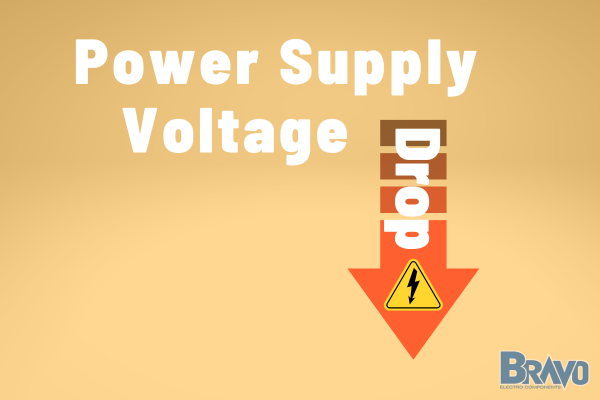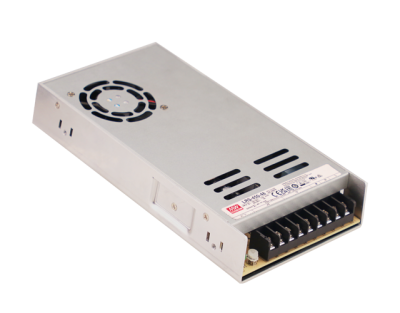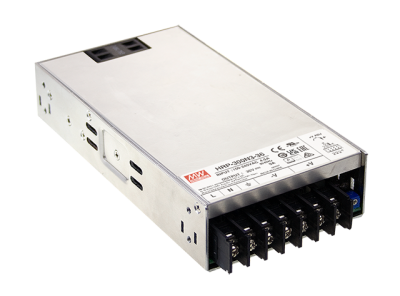
Power supply voltage drop can be a major source of frustration and stress for businesses and individuals alike. These drops can disrupt operations, damage equipment, and lead to financial losses. As a result, you’re left stressed and uncertain about how to navigate the problem.
So, what causes voltage drop in power supplies? When should I be worried about voltage drop, and how do I fix voltage drop on my power supply?
You’ve come to the right place. In this quick guide, you’ll find the answers to these questions and many others you may have about the challenge of voltage drops. We hope to leave you with complete confidence and clarity on your next steps by the time you finish reading this resource.
At Bravo Electro, we offer more than just products - we offer solutions. Together, we'll explore how our expertise, technical support, and quality products can help you overcome voltage drop challenges. First, what is a power supply voltage drop?
What is a Power Supply Voltage Drop?
A power supply voltage drop, simply put, is a decrease in the electric potential or voltage within a circuit. In an ideal world, electrical devices would receive a constant voltage, ensuring their optimal performance.
However, in real-world applications, various factors can cause the voltage supply to drop below the desired level, leading to inefficiencies, disruptions, and even damage to equipment.
Voltage drops are not just a minor inconvenience. They can seriously impact the performance and lifespan of your electrical equipment, potentially leading to higher operational costs and reduced productivity.
Understanding what causes these drops and how to mitigate their effects is essential for anyone responsible for managing electrical systems. So, what causes voltage drop in power supplies?
What Causes Voltage Drop in Power Supply?
Voltage drops are an inevitable part of any electrical system. They can occur for a variety of reasons, and understanding these causes is the first step to managing and mitigating their effects. Let's explore what causes voltage drop in power supply systems below.
Resistance in Power Lines
Resistance is a property of conductive materials that hinders the flow of electrical current. In power lines, resistance results from the interaction between electrons and the atoms of the conductor.
As current flows through the power lines, the resistance of the material causes a drop in voltage. The longer the power line or the smaller its cross-sectional area, the higher the resistance and the greater the voltage drop.
High-resistance materials can also contribute to significant voltage drops. Choosing appropriate materials and wire sizes for your power lines can help reduce resistance and minimize voltage drops.
Impedance in Power Supply Components
Impedance is a concept that extends the idea of resistance to alternating current (AC) circuits. In addition to resistance, impedance also considers the effects of inductance and capacitance in the circuit.
Components like transformers, inductors, and capacitors can introduce impedance into a power supply system, leading to voltage drops. Properly designing and selecting components with low impedance can help mitigate this issue.
Load Fluctuations
Sudden increases in the electrical load can cause temporary voltage drops. When multiple devices or heavy equipment are turned on simultaneously, the sudden surge in demand can cause a temporary drop in voltage.
Similarly, when large equipment is turned off, the sudden decrease in demand can cause voltage fluctuations. Properly managing and distributing loads can help reduce the impact of these fluctuations on your power supply voltage.
Temperature Variations
Temperature has a direct impact on the resistance of conductive materials. As temperature increases, resistance typically goes up, leading to higher voltage drops.
In environments with wide temperature fluctuations, it's important to consider the impact of temperature on your power lines and components.
Using materials with low-temperature coefficients of resistance and proper insulation can help minimize the effects of temperature on voltage drop. We’ll talk about choosing the right power supply certifications, power supply rating, or power supply specifications for your unique needs later on.
Harmonics and Power Quality Disturbances
Harmonics are higher-frequency components that can be superimposed on the main power frequency. These harmonics can be generated by non-linear loads, such as electronic devices, fluorescent lights, and variable frequency drives.
Harmonics can increase the impedance of the power supply components, leading to voltage drops. Additionally, other power quality disturbances, like voltage sags and swells, can contribute to voltage drops.
Properly filtering and managing harmonics, as well as using power conditioning equipment can help maintain a stable voltage in your power supply system.
We’ll talk more about how to fix voltage drops as a result of any of these causes later on. First, what happens when a power supply voltage drop occurs? Perhaps more importantly, when should I be worried about voltage drop?
What Happens When a Power Supply Voltage Drop Occurs?
Voltage drops in a power supply system are not just technical inconveniences. Their repercussions can be broad and impactful.
If you've ever experienced unexpected system failures, operational hiccups, or even sudden, unexplained costs, a voltage drop might be the silent culprit behind the scenes. Let's delve into the consequences of such drops and why addressing them should be a top priority.
Impact on Electrical Equipment
Voltage drops can place undue stress on electrical devices, causing them to operate outside their optimum parameters. Over time, this continuous stress can lead to premature wear and tear, reducing the power supply lifespan along with the lifespan of the equipment.
That’s not all. As voltage drops, many devices can't perform at their peak. For instance, motors might run slower, lights could dim, and sensitive electronic devices might malfunction or provide inaccurate outputs. In the medical industry in particular, there is no margin for error - but this is relevant to any industry for that matter.
Finally, severe voltage drops can lead to equipment overheating, presenting potential fire risks. Moreover, as devices try to draw more current to compensate for the voltage drop, there's a risk of circuit overloads.
Operational Disruptions
Voltage drops can cause equipment to suddenly shut down. This unexpected downtime can halt production lines, disrupt data centers, or interrupt critical processes.
In other words, voltage drops cut into your productivity and cost you money. They also frustrate your staff who are left sitting on their hands while systems reboot or someone comes in to repair power supplies.
And, for operations that rely on consistent data storage or transmission, voltage drops can result in data being lost or corrupted. This could have devastating effects on your operation.
Economic Implications
Voltage drops can cause devices to malfunction more often, leading to frequent repair or equipment/power supply replacement needs. Downtime, be it from halted production lines or disrupted services, can translate to significant revenue losses.
And, while it may seem counterintuitive, a voltage drop can result in devices drawing more current, leading to increased energy consumption and higher utility bills.
How Do I Fix Voltage Drop on My Power Supply?
You now know that, regardless of what causes voltage drop in power supply, the implications can be grave. The good news is that with the right measures in place, you can mitigate its effects and even prevent it from happening.
Proper Wire Selection
- Adequate Wire Size: One of the primary causes of voltage drop is the resistance in power lines. By selecting a wire gauge (AWG) that's appropriate for the current it will carry over a specified distance, you can significantly reduce resistance and, consequently, voltage drop.
- Wire Material: Copper wires have lower resistance compared to aluminum, making them a better choice for minimizing voltage drop.
- High-Quality Insulation: Good insulation can prevent voltage loss through leakage and can protect the wires from environmental factors that might increase resistance.
This chart below provides more context:
| Wire Gauge | Max Amperage | Max Distance |
|---|---|---|
| AWG 20 | 1.5 A | 3 ft |
| AWG 18 | 3.5 A | 5 ft |
| AWG 16 | 7.0 A | 7 ft |
| AWG 14 | 12.0 A | 10 ft |
| AWG 12 | 20 A | 15 ft |
| AWG 10 | 30 A | 20 ft |
| AWG 8 | 50 A | 25 ft |
| AWG 6 | 65 A | 30 ft |
| AWG 4 | 85 A | 35 ft |
| AWG 2 | 115 A | 40 ft |
Regular Maintenance and Inspection
- Identifying and Fixing Loose Connections: Loose connections can increase resistance and cause voltage drops. Regular power supply troubleshooting will help you uncover and tighten any loose connections.
- Monitoring Voltage Levels: Use a multimeter or a voltage monitoring system to regularly check voltage levels in different parts of your power supply system. This can help you identify and address voltage drop issues before they become critical.
- Addressing Corrosion and Damage: Over time, corrosion or physical damage to wires and connectors can increase resistance. Regular inspections can help you identify and address these issues early on. The sooner you notice bad power supply symptoms and take action, the better!
Optimizing Power Supply Design
- Balancing Loads: Distribute loads evenly across circuits to prevent overloading any single circuit, which can cause voltage drops.
- Shortening Wire Length: The longer the wire, the greater the resistance and the higher the voltage drop. Where possible, keep wire lengths short.
- Using Dedicated Lines for High-Load Equipment: High-load equipment can cause significant voltage drops in a circuit. By giving them dedicated lines, you can prevent them from affecting other devices.
Managing Loads Effectively
- Staggering Start Times: Starting multiple high-load devices simultaneously can cause a sudden drop in voltage. Stagger their start times to prevent this.
- Using Power Factor Correction Devices: These devices can reduce the reactive power in your system, reducing the load on the system and minimizing voltage drop.
Bravo Electro's Solutions for Voltage Drop Challenges
Navigating voltage drop challenges can be daunting, but you're not alone in this journey. At Bravo Electro, we provide comprehensive solutions to help you overcome these issues and ensure a reliable, efficient power supply system.
Expertise and Technical Support
Your power supply system is crucial for your operation, and you deserve support from the best in the business. Our team of experienced engineers and technicians is ready to provide you with expert advice and support at every stage of the process.
From initial assessment and planning to installation and ongoing maintenance, we're here to ensure that your power supply system is optimized to minimize voltage drops and operate efficiently.
Quality Products for Reliable Performance
Voltage drops can have serious consequences for your operation, and it's crucial to have components you can rely on.
Our power supply products are designed with quality and reliability in mind, ensuring consistent performance and minimizing the risk of voltage drops.
We source from trusted power supply companies like Mean Well and rigorously test our products to ensure they meet our high standards.
You can enjoy complete peace of mind by shopping with us - whether you need modular power supplies, DIN rail power supplies, enclosed power supplies, open frame power supplies, or any other style. We even have dc to dc converters or ac to dc converters!
But, we don’t just offer your standard 12 volt power supply, 24 volt power supply, 48 volt power supply, or even high voltage power supplies - we can help you create custom power supply systems based on your unique needs!
Customization to Meet Unique Needs
Every operation is unique, and so are its power supply needs. We offer a range of power supply products and can customize solutions to fit your specific requirements.
Whether you need a high-capacity system for a data center or a compact solution for a small operation, we can tailor our products and services to meet your needs.
Our team will work closely with you to understand your operation and design a power supply system that's optimized to prevent voltage drops and deliver consistent, reliable power. Start by filling out our power supply requirements form and we’ll be in touch!
Wrapping Up Our Guide to Power Supply Voltage Drop
From resistance in power lines, impedance in power supply components, load fluctuations, temperature variations, and power quality disturbances, there are many culprits of the dreaded power supply voltage drop.
But, knowing what causes voltage drop in power supply and the consequences of this issue, you’re now equipped to take action and rid yourself of the stress that they can cause. You don’t have to go it alone, either. Bravo Electro is here to help you mitigate the occurrence of these problems.
By making the right choices in wire selection, implementing regular maintenance and inspection, optimizing power supply design, and managing loads effectively, you can mitigate the effects of voltage drops and ensure smooth operations.
So, why not reach out to Bravo Electro today? Let us help you ensure a consistent and efficient power supply that supports your operation without interruption. Your success is our success, and we're here to provide you with the expertise and support you need to achieve it!







